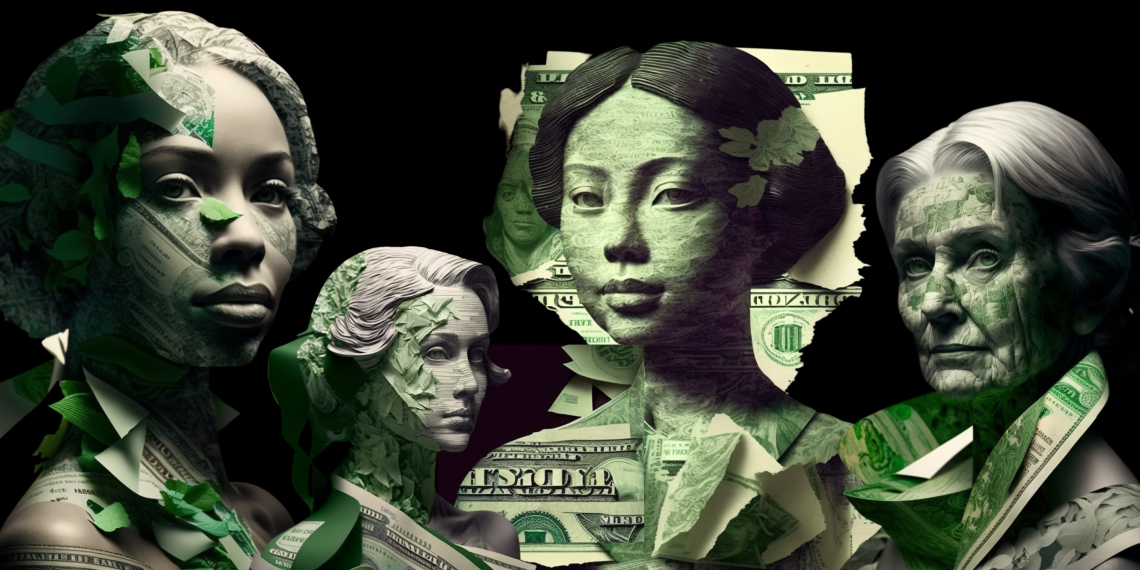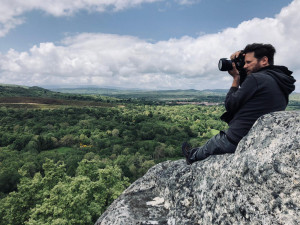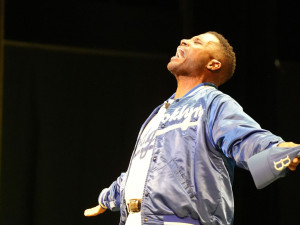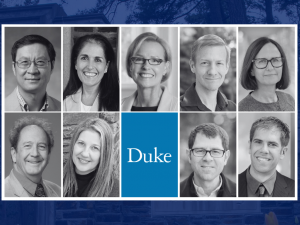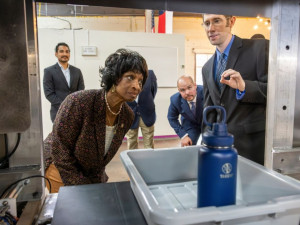Vital but Invisible: How Women Drive the Care Economy in the United States
Jennifer Nash, Jean Fox O'Barr Professor of Gender, Sexuality & Feminist Studies, minces no words summing up how care as a product is viewed in the United States.
“I think care isn’t valued because it's women's work. Anything that women do is devalued.”
From birth to death, everyone receives care at some point in their life. And the “care economy” is the economic activity generated by the provision of care services like childcare, elder care and health care. This includes both paid and unpaid work and can involve a range of sectors and industries including education, health care and social services.
But how do we value this vital care? Who determines what value someone’s care adds to the economy? Why is so much of care seen as “women’s work” and thus devalued? These questions are at the heart of recent scholarship by several faculty members across Trinity College of Arts & Sciences.
What care counts
“The question that people thinking about care economy ask is ‘How do we measure it?’” says Jocelyn Olcott. A professor of History, Gender, Sexuality, & Feminist Studies and International Comparative Studies, Olcott says there are two different kinds of care: care that “counts” as part of the market and care that does not.
“Paid nursing care, paid childcare or the hot bar at Whole Foods all count as part of the GDP,” she says. GDP stands for gross domestic product, the monetary or market value of all goods and services produced within a nation’s borders.
“But if you go home and take care of your own child, as much as that may feel like work, it doesn’t add to the GDP. The actual labor and time and expertise and attention and all those things that we think of as work in these other spaces don't count as work if they don’t enter the marketplace.”
And who is performing the majority of this unpaid labor? Women. Olcott says that gendered division of labor has always been around.
“When we think of the major parts of the care economy, they’re overwhelmingly driven by women and, in most sectors, women of color. In so many contexts around the world, these care jobs are poorly regulated, have poor working conditions and wages and are held by ethnically — and racially-marginalized — women.”
According to Olcott, the division of care between market care — which can be measured and given a price tag — and non-market care — which includes all forms of free care labor — is a 19th century creation.
“It mostly comes along with a hard push toward industrialization and the creation of capitalism,” she says. She points out that this all ties into the birth and adoption of the GDP in the 1940s, conversations about what constitutes the economy and what constitutes productive work within that economy.
“Many people studying the care economy feel that if we don’t measure all aspects of care, it will remain invisible,” says Olcott.
Olcott has noticed that students today are more in tune with the dynamics of the care economy than in the past, and what it means to balance career and family.
“But many still cling to the misconception that if care is paid, it can’t be authentic,” she notes. “If they have a nanny or send their child to daycare, the affection and love they’re receiving isn’t ‘real.’”
She thinks there’s a relationship between this misconception — the devaluation of care — and how care labor is underpaid. Her current research challenges this idea.
Olcott is working on an interdisciplinary project titled “Revaluing Care in the Global Economy,” that shines a light on the reality of care in the present day through a series of talks, art exhibits and a conference. At the heart of the project is a website with an open access bibliography where anyone can type in keywords related to care and find articles and books to help them in their research.
“We’re really trying to create resources that make it possible, in particular for teachers and journalists, to access information about care and the care economy,” Olcott says. “They’re the drivers of change.”
Undervalued, but lifesaving: Birth and postpartum care
Reliance on the care economy starts, quite literally, at birth.
Jennifer Nash’s scholarship on Black motherhood spans pregnancy care, birth and postpartum care. And while her work focuses on the specific challenges faced by Black mothers, her findings extend beyond racial divides.
For her most recent book, “Birthing Black Mothers,” Nash interviewed people who work with pregnant and postpartum women, from doctors to midwives to doulas — non-medical birth workers who assist during labor. She asked them about what women need in that first year after bringing a child into the world, and how this form of care work might bring down the persistent and alarming Black maternal mortality rate.
Nash found that the birth workers she interviewed for her book were not only supporting families by helping them care for a new baby in their household, but also by plugging them into vital support networks. They knew which lactation consultants were the best; they knew what pediatricians were supportive; they connected clients who had babies at the same time.
“Isolation is so much a part of postpartum life in America in particular,” Nash says, “and that is partly because of how little leave we get and also how far many people live from family and friends.”
“There’s a more expansive conception of what kind of care is needed in the postpartum period now. But I found that this expansive conception of care is not being advanced by the hospital or the state, but by people like doulas.”
Doulas can also help women who may distrust the medical establishment, Nash said.
“People will tell you a story about going to a doctor and feeling like they have to convince the doctor, or they have to advocate for themselves, or they’re not believed, and that has become a common story that we accept about medicine.”
Nash notes that most of the non-medical birth workers she spoke with are not surviving on wages for their care work alone.
“These folks think that what they do is so important that they do it on top of working at Target or in a preschool,” says Nash. “And then, after all that, they parent their own children. Working as a doula, it's not even a second shift. It's like a third or a fourth or fifth shift.”
Nash points out that women who do birth work aren’t the only ones undervalued and underpaid. The issue extends far into childhood care.
“There's a way that we in America don't see daycare as essential education,” she says. “These are again women of color doing low wage work, keeping children cared for and safe, and their labor secures the freedom of working mothers.”
Care no one likes to think about: Sick and aging care
The complexities of navigating childcare as working parents in the United States are not a secret — and were exacerbated by the COVID-19 pandemic. Fewer people, however, are as well-informed about the complexities of caring for a sick or aging relative.
Elder care doesn’t receive a fraction of the attention given to childcare reform, despite old age being an inevitability for most. Research by Gilhuly Family Associate Professor of History James Chappel runs counter to that trend.
One of the biggest transformations of our era is the lengthening of the average human lifespan, he says, and the preponderance of people over 65. At the same time, it was very common for adult children to still live with their parents or to live nearby before World War II, sharing incomes and duties.
“It was easier because people weren’t living as long. If someone dies at 67 that's much different than someone dying at 87,” Chappel says.
That shift in population dynamics shaped whom our society cares for, and how. “It used to be there were tons of kids, but many of them would die, and there were not that many older people,” he says. “Care labor was really focused on children and how to get them to live longer; and in the U.S., we’ve figured that out.”
Now, thanks to medical and technological advancements, older people are living longer as well.
“In the ‘50s and ‘60s, you get really the idea for the first time that older people should be independent — that they should be playing tennis and having full social lives” Chappel says.
He explains that this new investment in the independence of elders led to retirement communities, age-restricted private neighborhoods and senior citizens clubs. But legislation and policy have not caught up to the overwhelming needs of a large aging population.
“We're now living in a society where there are a lot of older people,” Chappel says, “and elder care specifically needs to be a much bigger part of the conversation in the American policy network.”
There are a few reasons the conversation hasn’t caught up with the dynamics. The first is a recurring theme: women are the ones primarily managing and performing elder care.
“Middle-aged women are having to do it for free,” Chappel says. “Women are the ones that typically perform the day-to-day labor of elder care, from driving someone to appointments, to letting an aging parent move in with them, to helping them physically move if there are mobility issues.”
Not only are women doing the everyday care, they’re also developing the infrastructure that they’re working within.
“If you look at the things that make older living manageable in this country — things like hospice, senior clubs, transportation that will take you to the farmers market — these things were all organized, mainly by women and social workers, in the ‘60s and ‘70s.”
Another reason Chappel believes that these challenges aren’t addressed is that no one wants to think about aging, death and dying.
“We talk a lot about how staying healthy can help with aging, but it distracts attention from the fact that old age is empirically linked with disability,” Chappel says. “At some point in my aging, unless I die catastrophically, I'll have a long period of disability. And many people feel uncomfortable thinking about that.”
He says many people have a fear of needing help, whether that be from family or social services, and it can be hard for people to adjust to needing to change power dynamics in their parental relationships.
“Caring for children is rewarding in a lot of ways,” Chappel says. “You’re making them more independent; you’re creating future citizens. Caring for older people is not like that, and it is in some ways a lot more challenging. For some people, of course, it is deeply rewarding. But for many others, it is emotionally destructive because they are managing a story of decline rather than one of growth.”
Finding joy in the worst of times: End of life and grief care
Care doesn’t end with death. Those left behind when a loved one dies have to deal with a mountain of bureaucracy as well as their grief. And while someone can take a prenatal class to prepare for labor and delivery, end-of-life care and death are not talked about in the same way. Caring for those at the end of life may at first seem disheartening, but this important act of care can be joyful and lead to growth.
“I think that partly because of our culture of individualism and our emphasis on progress, we don’t talk about death much,” says Jehanne Gheith, associate professor of Slavic Languages and Literature and co-director of the Health Humanities Lab. “We also tend to push thoughts of death and dying away. Denial can be great for a lot of things. But death is inevitable, so that denial only means that we face loss with no tools.”
Gheith has had an unconventional career path. She is a scholar of Russian literature and culture, Chair of the Slavic Department at Duke and maintains a small private practice as a grief counselor.
After her brother’s sudden death in 2003, Gheith reflected extensively on the uncertainty of life and how best to spend her remaining time on Earth. She decided to get a master’s degree in social work and specialize in end-of-life care and grieving. Her goal was to support people who are on the verge of death and their families, to guide them through the dying process and help them process grief.
But what does that look like?
“The two main things that we do in end-of-life care in the United States are hospice care and palliative care (which is also for people who are not terminally ill),” says Gheith. “The hospice social worker comes in and provides emotional support and resources, such as getting somebody with dementia to adult daycare or helping them manage it. Right after getting a terminal diagnosis, people are in crisis. And that's a horrible time to be thinking about these things for the first time.”
She also stresses that the women who usually take up the invisible burdens around end-of-life care need to be supported. Their roles might evolve from being the first person to notice that dad's having a little trouble with his memory, to making the appointments, to actively bringing caregivers into their home.
“The problem many women in this space have is that they get overstretched,” says Gheith. "When you're working and caring, it's so hard to take time or even conceive of the fact that you might need time to yourself.”
“I wish this societal conversation was different. I wish people talked about how hard the processes of dying and grieving are, and how there can be gifts in doing this difficult work. But it’s also important to know when to ask for help.”
Gheith says the same of the medical professionals who work in end-of-life care. While serving as hospice social worker with Duke Hospice and also when she was a bereavement counselor at Duke Hospice Bereavement Services, Gheith was constantly trying to think of ways to help medical professionals who were dealing with so much death on a regular basis.
“Dr. Anthony Galanos is a palliative care doctor at Duke, and he has developed a lot of protocols around grief in the workplace,” said Gheith. “One thing that seemed to help is setting aside time where nurses could come together and could say, ‘yes, we had five deaths on the ward this week, and that was really hard.’”
“A lot of workers in this space have the temptation to pretend it hasn't happened. That can be a great short-term strategy, but it leads to long-term burnout. Taking some time to acknowledge the sadness tends to help people integrate it much more quickly.”
The biggest thing Gheith thinks would help with alleviating the burden of care? Family leave.
“We need much more encompassing family leave policies,” she says. “We need to be able to offer support for all stages of life.”
And even though the work can be challenging, Gheith finds a lot of joy in it.
“People think it’s always depressing — and it can be. But what a lot of people don’t realize is that there’s a lot of laughter at the end of life. There's a lot of laughter in grief groups.
“I’ve found that once you start talking to people about death and dying, if you give them the right vehicles, there can be a sense of relief and deep growth, which to me is the most important thing.”
Where are we heading?
Over the past few years, the care economy was thrust into the spotlight. Schools and daycares closed. Family members weren’t allowed to visit loved ones in nursing homes and senior housing due to the risk of contagion. Many around the globe are grieving the loss of loved ones.
But the Duke scholars share a feeling of hope that we may yet see a change in the way care is classified in the United States.
“I feel like we're on the cusp of a new economy of care that needs a lot of thought and infrastructure, but it’s coming.” Chappel says. Since major welfare expansions have happened before, he believes they can happen again.
“There’s a new kind of attention to these issues, new kinds of policy energy around social security reform, and I am optimistic that we could see major movement on this.”
